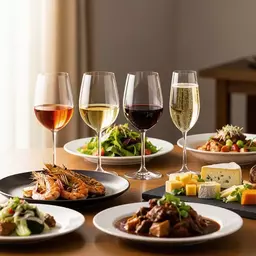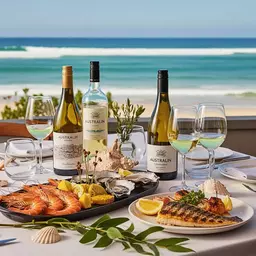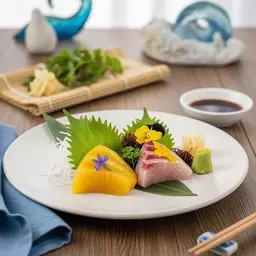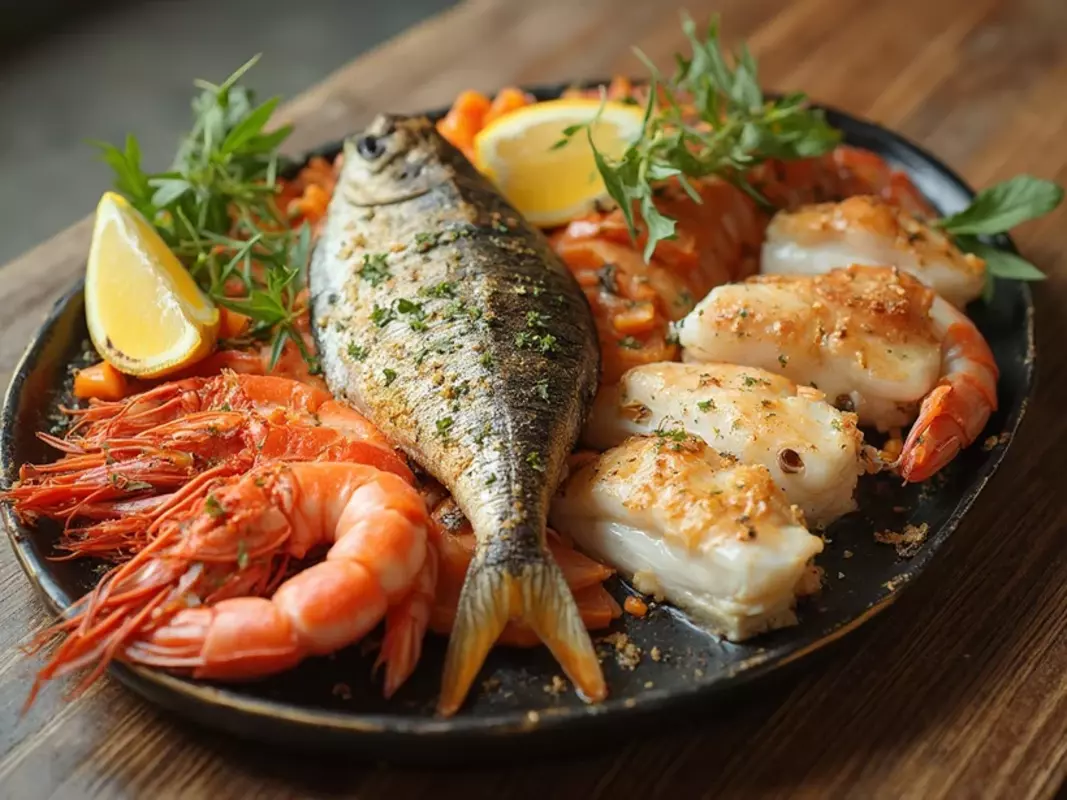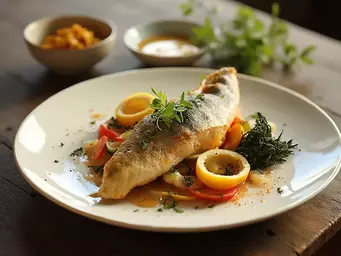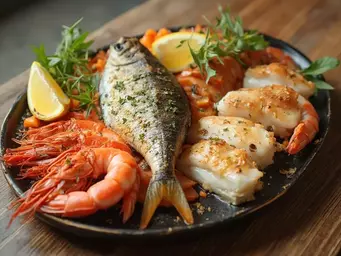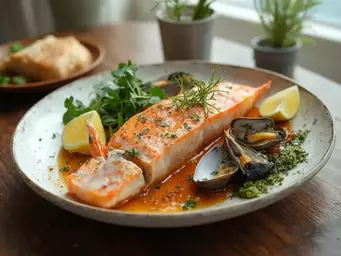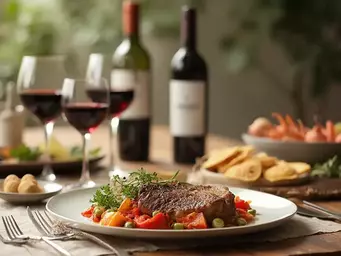Regional Australian Seafood Delights
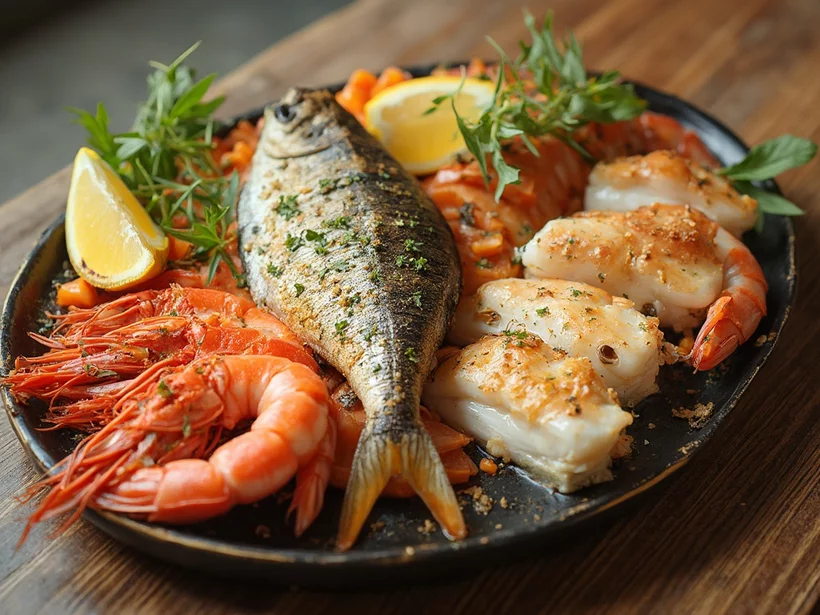
Did you know that Australia's seafood culture is not just about the flavors we enjoy, but also about the rich traditions and stories that go along with it? As we dive into this fascinating culinary world, you'll uncover the deep connections between Indigenous practices and the modern dining experience that shapes how we appreciate our seafood.
What You Will Learn
- Indigenous Australian seafood traditions highlight the importance of native species like barramundi and mud crab in culinary practices.
- Sustainable harvesting practices rooted in Aboriginal culture promote a respectful relationship with marine resources.
- Colonial and multicultural influences have shaped modern Australian seafood cuisine, leading to a rich diversity of flavors.
- Hands-on cooking classes focusing on Indigenous ingredients provide deeper insights into cultural significance and preparation techniques.
- Exploring regional seafood varieties helps honor the stories behind each catch, enhancing our dining experiences.
- Engaging with local seafood markets and festivals connects us with the community and the heritage of Australian cuisine.
Key Influences Shaping Australian Seafood Culture
The rich tapestry of Australian seafood culture is significantly shaped by three core areas: Indigenous Traditions, Historical Influences, and Diverse Species. These elements are explored in detail below.
Indigenous Traditions
- Barramundi & Mud Crab: Staples in Indigenous diets, often cooked whole.
- Cooking Methods: Earth ovens, open fires, steaming in leaves, hot stones.
- Sustainable Practices: Rooted in Indigenous knowledge, respecting marine resources.
Historical Influences & Adaptations
- Colonial Methods: European cooking merged with Indigenous practices.
- Multicultural Adaptations: Asian, Mediterranean, Middle Eastern cuisines.
- Modern Innovations: Contemporary chefs experimenting with fusion techniques.
Diverse Seafood Species
- Southern Bluefin Tuna: Rich flavor, tender, often served raw or seared.
- King George Whiting: Delicate, flaky flesh, prized along the southern coast.
- Coral Trout: Vibrant, versatile, great for grilling, pairs with tropical flavors.
Engagement & Appreciation
- Experiment: Sustainable seafood recipes.
- Visit: Local seafood markets, connect with fishermen.
- Attend: Food festivals, cooking classes, workshops.
Understanding the Rich Tapestry of Australian Seafood Culture
As I dive into the world of Australian seafood, I can’t help but feel the weight of tradition and culture that surrounds it. Our coastline, teeming with life, offers a vibrant palette of flavors and stories. From the rich history of Indigenous practices to the modern culinary innovations that highlight our unique species, understanding this tapestry enriches our appreciation for what’s on our plates. Have you ever considered how deeply our seafood culture is intertwined with our identity as Australians?
The Role of Indigenous Australian Seafood Traditions
Indigenous Australian culture has always held a profound connection to the sea, with native species such as barramundi and mud crab playing a vital role. Traditional cooking methods, including the use of earth ovens and open fires, give these dishes a unique flavor and respect for the ingredients. It’s fascinating to think about how these timeless practices continue to influence modern cooking. Have you ever tried cooking barramundi using these traditional methods?
- Barramundi: A staple in Indigenous diets, often cooked whole for a smoky flavor.
- Mud Crab: A delicacy typically prepared with minimal seasoning to highlight its natural sweetness.
- Cooking Methods: Techniques such as steaming in leaves or using hot stones are still celebrated today.
These traditional practices not only celebrate the ingredients but also the community that connects around them. They remind us that every catch has a story, enriching our dining experiences in ways we might not even realize.
The Impact of Aboriginal Culture on Seafood Practices
The influence of Aboriginal culture extends beyond traditional recipes; it shapes how we approach seafood harvesting and preparation today. By integrating native ingredients with modern techniques, contemporary chefs are crafting dishes that honor our heritage while pushing culinary boundaries. Imagine tasting a dish that features a native herb alongside a classic seafood preparation! The Australian seafood industry is committed to promoting these sustainable practices.
- Native Ingredients: Ingredients like finger limes and wattleseed are increasingly used to elevate seafood dishes.
- Harvesting Practices: Sustainable practices rooted in Indigenous knowledge encourage a respectful approach to our marine resources.
- Community Engagement: Collaborative cooking experiences allow for the sharing of cultural stories and flavors.
It’s heartening to see how these practices not only preserve our cultural heritage but also foster a greater appreciation for the flavors of the sea. Each dish becomes a celebration of our rich past and a bridge to our future.
Historical Influences on Australian Seafood Cuisine
As we trace the evolution of Australian seafood cuisine, we see the profound impact of colonial influences and multicultural adaptations. The introduction of new species and cooking techniques has created a melting pot of flavors that characterizes our cuisine today. This is a beautiful reflection of our nation’s journey! The Australian Bureau of Agricultural and Resource Economics and Sciences (ABARES) provides valuable insights into the fisheries sector.
- Colonial Influences: Early settlers brought European cooking methods that have since merged with Indigenous practices.
- Multicultural Adaptations: Asian, Mediterranean, and Middle Eastern cuisines have enriched our seafood dishes.
- Modern Innovations: Chefs today are experimenting with fusion techniques, creating exciting new culinary experiences.
This historical perspective not only enhances our understanding of Australian seafood but also invites us to celebrate the diversity within our plates. Each bite is a reminder of the myriad cultures that have shaped our food landscape, making it as vibrant as our coastal shores.
Diverse Seafood Species and Their Culinary Uses
With such a rich backdrop of culture, it’s time to explore the diverse seafood species that grace our waters. From the luxurious southern bluefin tuna to the delicate King George Whiting, each fish has its own culinary significance. What’s your favorite seafood to cook with?
Highlighting Unique Regional Seafood Varieties
Australia is home to an array of seafood species, each with a story and flavor profile that deserves recognition. Let's take a closer look at some standout varieties!
- Southern Bluefin Tuna: Known for its rich flavor and tender texture, often served raw in sushi or seared.
- King George Whiting: A prized catch along the southern coast, celebrated for its delicate, flaky flesh.
- Coral Trout: Vibrant and versatile, it shines in grilled dishes and pairs well with tropical flavors.
Each of these species not only tastes incredible but also carries a cultural significance, connecting us to the waters and communities that sustain them. Exploring their unique culinary uses is not just about cooking; it's about honoring the stories behind every catch.
We Want to Hear From You!
What aspect of Australian seafood culture resonates most with you? Is it the traditional Indigenous practices, the diverse species, or the modern culinary innovations? Share your thoughts below:
Frequently Asked Questions About Australian Seafood Culture
What are some key Indigenous Australian seafood traditions?
Indigenous traditions often involve native species like barramundi and mud crab, prepared using traditional methods such as earth ovens and open fires, emphasizing respect for the ingredients and sustainable practices.
How has Aboriginal culture influenced modern seafood practices in Australia?
Aboriginal culture has influenced modern practices by introducing sustainable harvesting methods and promoting the use of native ingredients like finger limes and wattleseed in contemporary seafood dishes, enriching culinary diversity.
What historical influences have shaped Australian seafood cuisine?
Australian seafood cuisine has been shaped by colonial influences, which merged European cooking methods with Indigenous practices, as well as multicultural adaptations from Asian, Mediterranean, and Middle Eastern cuisines, leading to a rich fusion of flavors.
What are some unique regional seafood varieties in Australia and their culinary uses?
Unique regional varieties include Southern Bluefin Tuna (rich, tender, often served raw), King George Whiting (delicate, flaky, prized along the southern coast), and Coral Trout (vibrant, versatile, great for grilling).
How can I get involved and appreciate regional Australian seafood?
You can get involved by experimenting with sustainable seafood recipes, visiting local seafood markets, attending food festivals, and participating in cooking classes or workshops that focus on Australian seafood and Indigenous ingredients.
Reflecting on the Journey Through Australian Seafood
As we reflect on the rich tapestry of Australian seafood culture, it becomes clear that the story is deeply intertwined with the traditions of our Indigenous peoples, the bounty of our diverse marine life, and the culinary practices that have evolved over time. The journey through these flavors teaches us the value of respecting both our ingredients and the stories behind them.
The importance of Indigenous traditions, such as those surrounding native species like barramundi and mud crab, reminds us of the profound connection that Indigenous Australians have with the land and sea. Additionally, our exploration of marine biodiversity serves as a critical reminder of the delicate balance necessary to maintain a sustainable seafood future. Through this journey, we uncover not just the ingredients, but the identity and culture of Australia itself.
Getting Involved: Cook, Learn, and Appreciate Regional Australian Seafood
Now that we've traversed the beautiful landscapes of Australian seafood culture, it's time to put this knowledge into action! I encourage you to engage with our vibrant regional seafood culture by diving into hands-on experiences. Whether it’s trying out a new recipe featuring fresh local catches or visiting a nearby seafood market, every bite is an opportunity to appreciate our culinary heritage.
Here are some ways you can get involved and truly savor the flavors of our coastline:
- Experiment with recipes that highlight sustainable seafood options.
- Visit local seafood markets to connect with fishermen and learn about their catch.
- Attend food festivals that celebrate Australian seafood and its cultural significance.
- Engage with chefs and culinary experts to broaden your understanding of seafood preparation.
By immersing yourself in these experiences, you'll not only enhance your culinary skills but also contribute to a sustainable seafood future. It’s all about making informed choices that respect both our environment and the artistry of our local cuisine!
Cooking Classes and Workshops: Enhancing Culinary Skills
For those eager to deepen their culinary skills, there are numerous cooking classes and workshops available that focus on seafood preparation and the use of Indigenous ingredients. These classes not only teach you how to handle and cook seafood but also provide insights into the cultural significance of the dishes you create.
- Hands-on sessions with local chefs who specialize in Australian seafood.
- Workshops that focus on sustainable practices in seafood sourcing.
- Classes that incorporate Indigenous ingredients and traditional cooking methods.
Participating in these classes is a fantastic way to connect with the community and learn the skills needed to create delicious, culturally rich dishes. At The Yellow Tail Table, I often share my own experiences in these workshops, and I can tell you, the knowledge gained and the connections made are invaluable!
Recap of Key Points
Here is a quick recap of the important points discussed in the article:
- Indigenous Australian seafood traditions emphasize the connection to native species like barramundi and mud crab, using time-honored cooking methods.
- Contemporary chefs are integrating native ingredients, such as finger limes and wattleseed, into modern seafood dishes, honoring heritage while innovating.
- The evolution of Australian seafood cuisine reflects colonial and multicultural influences, creating a rich tapestry of flavors and techniques.
- Engaging in local seafood markets and hands-on cooking experiences fosters a deeper appreciation for sustainable practices and cultural stories.
- Participating in cooking classes focused on seafood preparation can enhance culinary skills and connect individuals with the community.
